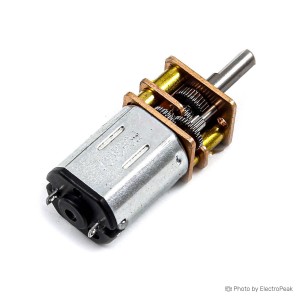Yes, you can control both the speed and direction of a gear motor. Using a motor driver or controller, you can adjust the voltage supplied to the motor to control the speed. Additionally, by reversing the polarity, you can change the direction of rotation.
Gear Motors
What are Gear Motors?
Gear motors are compact and versatile devices that combine an electric motor with a gearbox, providing torque and speed control for various applications. They play a crucial role in robotics, automation, and electronic projects where precise motion is required.
Price of Gear Motors
The price of gear motors varies based on factors like voltage, gear ratio, and construction materials. Standard models like the GA12-N20 are budget-friendly, while specialized versions with specific features may have a higher cost.
Tips for Buying Gear Motors:
When selecting a gear motor, consider factors such as voltage requirements, gear ratio, and intended application. Plastic or metal shaft options offer durability, and choosing between single or dual-axis motors depends on the complexity of your project.
Popular Models of Gear Motors:
Can I control the speed and direction of a gear motor?
Are gear motors noisy during operation?
The noise level of gear motors can vary. In general, gear motors are designed for quiet operation, especially when compared to standard motors. However, the noise can depend on factors like gear type, quality, and load. If noise is a concern for your application, consider choosing gear motors with noise reduction features.
Are gear motors durable and long-lasting?
Gear motors are designed for durability, and their lifespan depends on factors like quality, usage, and maintenance. Choosing high-quality gear motors and using them within their specified limits can contribute to their long-term reliability.
Can I modify or customize a gear motor for my specific needs?
Modifying gear motors is possible, but it requires a good understanding of their internal workings. For customization, consider choosing gear motors with features like replaceable gears or encoders. Always follow manufacturer guidelines to ensure modifications do not compromise performance or safety.
